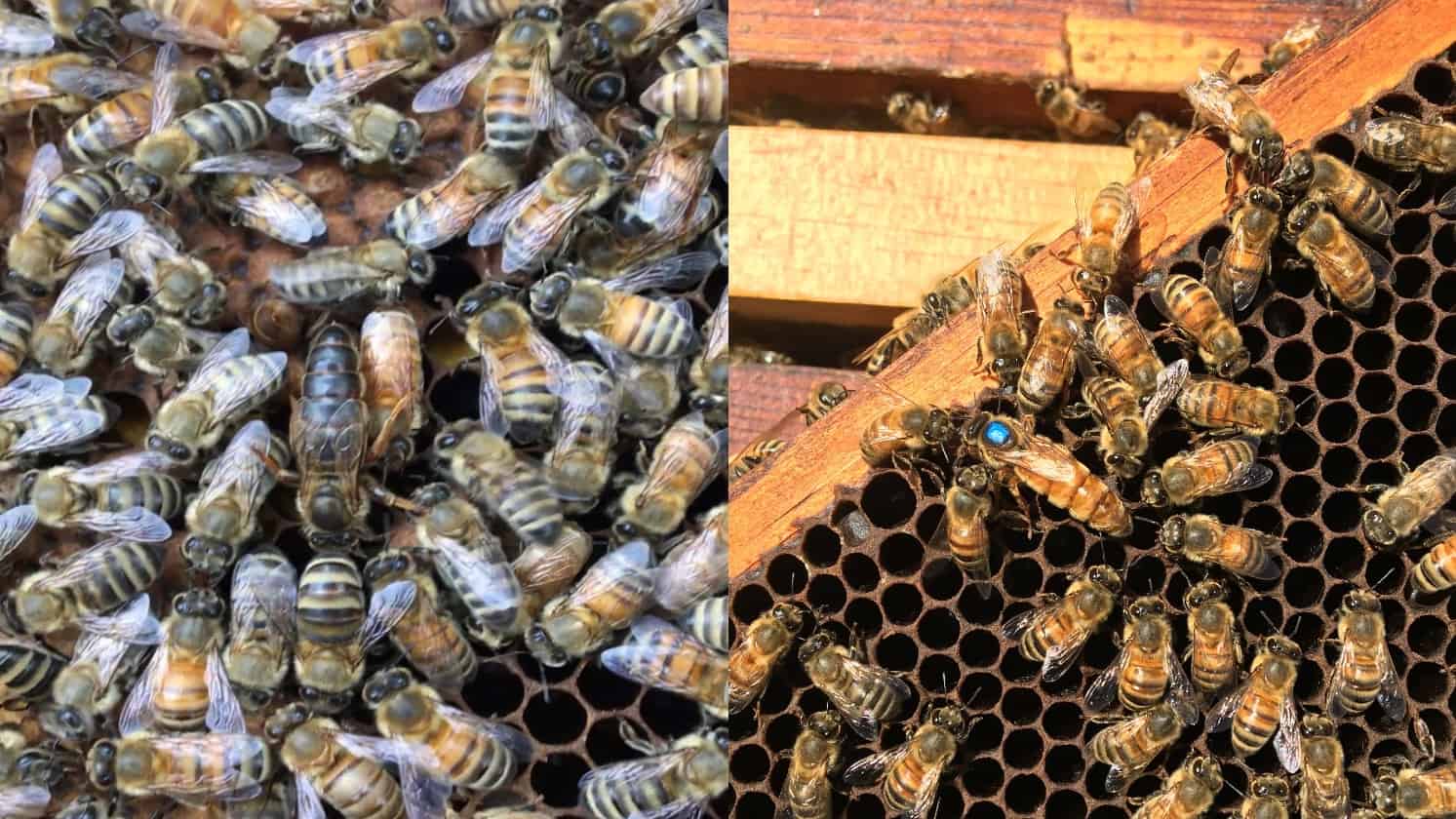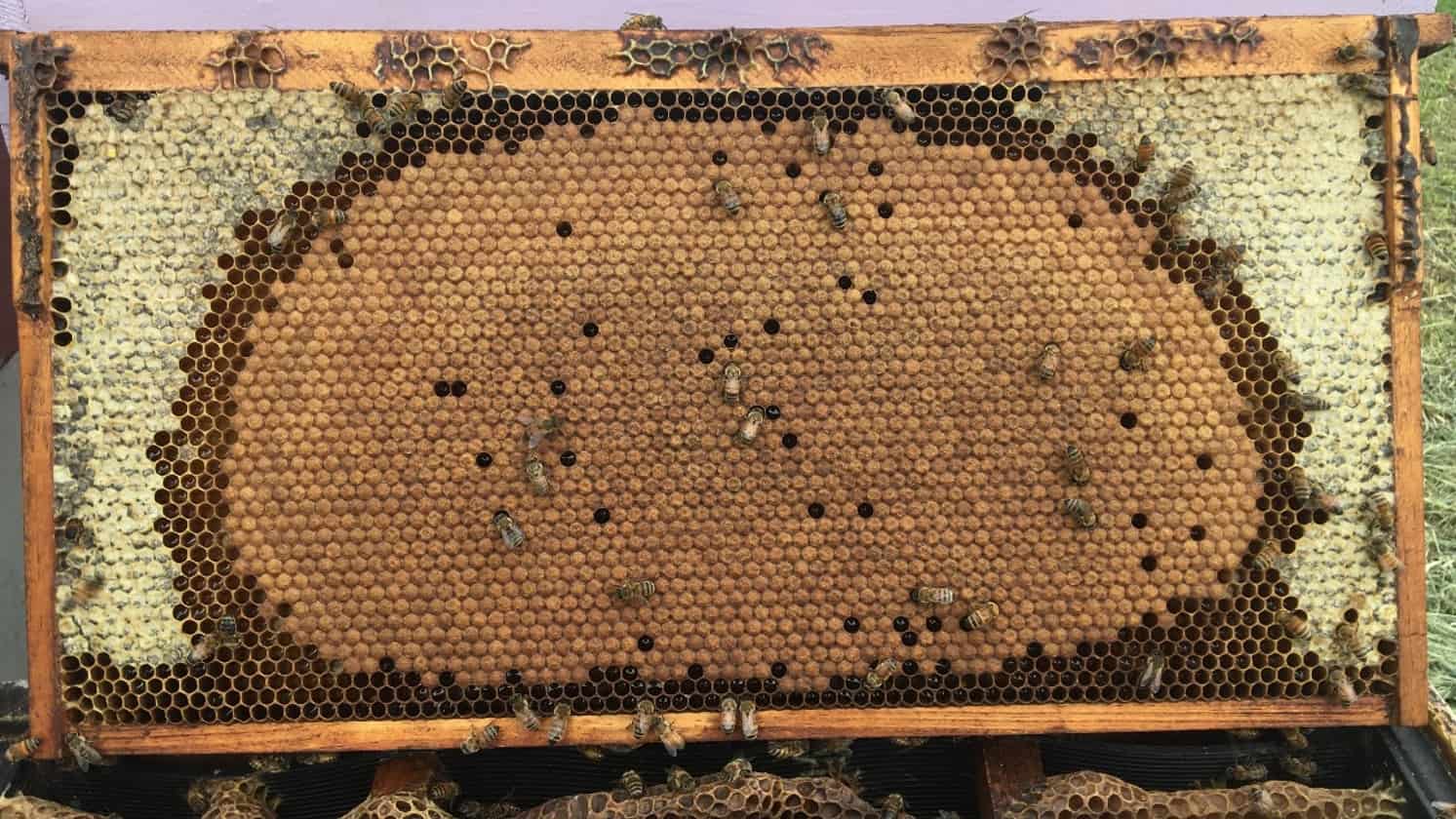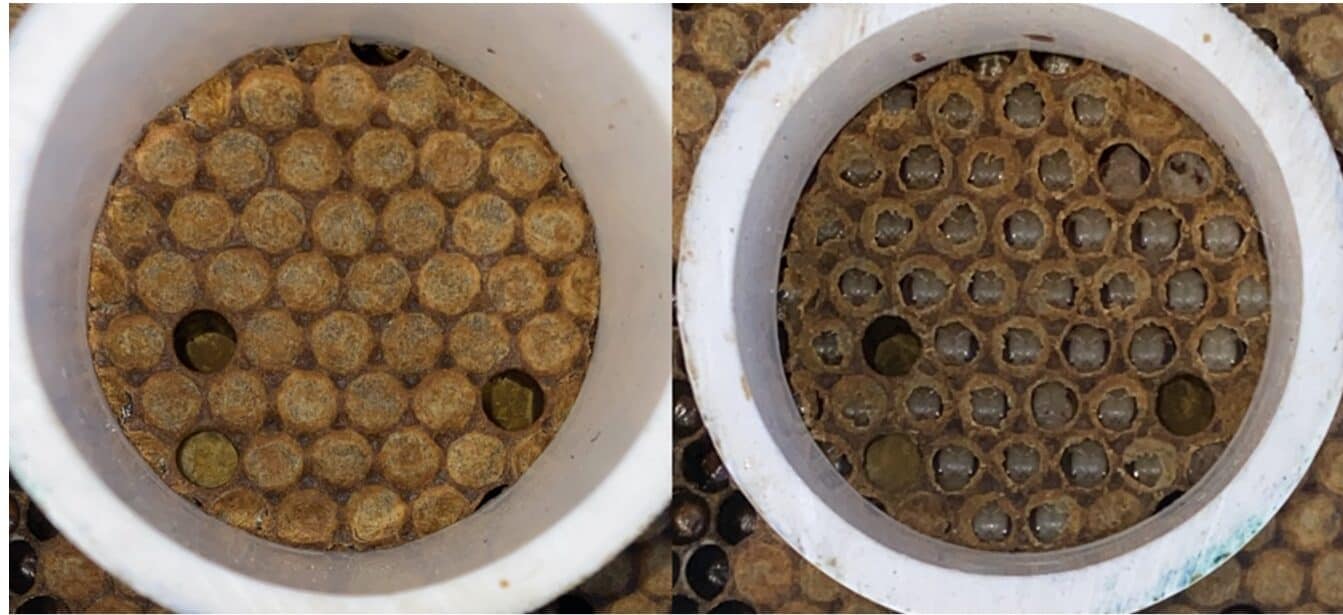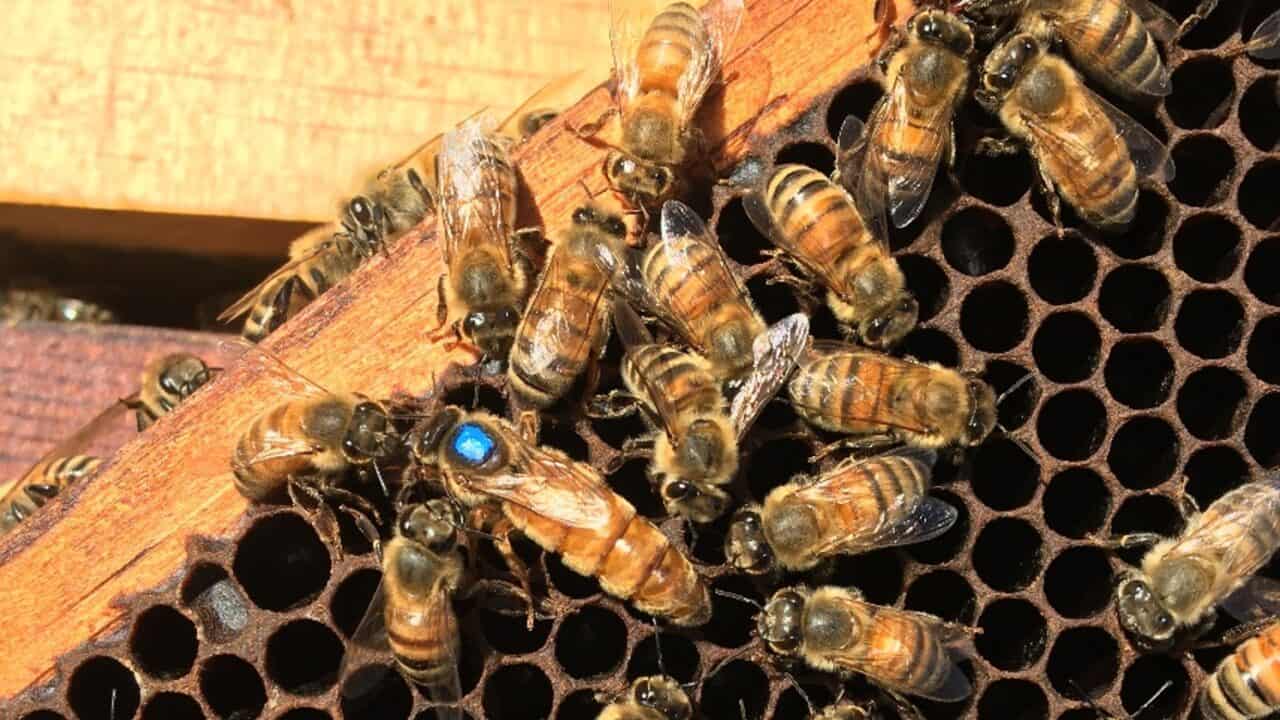Last July 2021, I published the BIP blog “Browsing For Breeder Queens-Part 1” where I discussed what a breeder queen is and the various ways that you can obtain them. So now let’s dive deeper into how to test bees for desirable traits to improve your stock.
What To Look For In a Breeder Queen
There are a number of traits that queen breeders evaluate when selecting breeder queens – color, gentleness, honey production, hygienic behavior, population size and growth rate. However, the weight given to these traits varies by queen breeder, and even by the region or state where the beekeeper is located.
Color – Color plays a huge role in breeder queen selection, especially for beekeepers who sell specific honey bee lines. For example, certain California queen breeders only select queens that exhibit gold coloration, a possible indicator of Italian honey bee lines. If any queen misses the mark on color in these operations she is culled.

Gentleness – Gentleness should be at the top of the list when selecting breeders for the next generation of queens that will be running your colonies. Nobody enjoys dealing with stinging, aggressive bees and neither will your customers. Choose breeders from colonies that are gentle throughout the entire inspection avoiding those with bees jumping off of the combs at you. This will help ensure they will not launch a full-on attack if a frame accidentally gets dropped or the box gets bumped too hard. Waving your hand over the top bars is a good test for gentle behavior. If workers are jumping off the frames and immediately stinging your hand, those colonies should not be in the running for breeder material.
Honey Production and Colony Size – These two traits go hand in hand. To have a large honey crop requires a colony with a large population of bees of the right age to do the work when nectar sources are available. Of course, climate and food availability are of primary importance, but genetics also has a role to play. Generally speaking, Italian and Italian-dominant hybrid strains exhibit higher brood production rates earlier in the season than Carniolan or Russian varieties. High brood production is a sought-after trait for beekeepers who send their colonies into pollination early in the year, or those that are located where there are early season honey flows. But the drawback to having a colony with a high population size is simple – lots of bees means lots of mouths to feed. Colonies derived from Italian queens may sometimes starve themselves simply because they are less responsive to the environment and queens do not necessarily shut down egg laying when resources become scarce.

Hygienic Behavior – Hygienic behavior in honey bees is a genetic trait defined as the ability of a colony’s workers to detect and remove diseased or dead honey bee pupae. The most commonly used method to test for hygienic behavior is the freeze-killed-brood (FKB) test. To perform the FKB test, a frame containing predominantly sealed brood is removed from the colony and a standardized number of developing pupae are freeze-killed with liquid nitrogen. The frame is then returned to the colony; twenty-four hours later, the number of freeze-killed pupae the bees successfully detected and removed (or partially removed) is quantified.
If liquid nitrogen cannot be accessed, the pin prick test can be performed instead of FKB. As the name suggests, this test involves killing the developing pupae by making a pin-sized hole through the capped brood cells. The pin prick test is a bit more tedious than FKB because the beekeeper has to individually prick each capped cell. It is also less reliable than FKB because it only measures the removal aspect of hygienic behavior, bypassing the detecting and uncapping components of hygienic behavior. For both FKB and pin prick tests, colonies are considered hygienic if, after 24 hours, the colony successfully removes 95% or more of the dead pupae. Incorporating this trait into your breeding stock leads to better hive health and in turn colonies with greater overall resistance to pests and diseases.
Varroa Sensitive Hygiene (VSH) – VSH is a hot topic in the beekeeping industry these days. Unlike hygienic behavior, which is the ability to detect and remove dead pupae, which is what FKB and pin prick tests measure, VSH is a genetic trait defined as the ability for honey bees to detect Varroa in sealed brood and uncap the infested cell, disrupting their reproductive cycle. This leads to fewer Varroa being able to reproduce in the colony. VSH queens are highly sought-after, and the high demand has led some queen breeders to develop lines that carry this trait. One example is the Hilo Queen Project based in Hawaii. To develop VSH lines, queens are specifically chosen from colonies that are able to keep Varroa loads low without treatment, and artificially inseminated with VSH drone semen. Maintaining VSH lines is difficult; the VSH trait will be lost if the queen mates with a sufficient number of drones that do not carriers this genetic trait.
The VSH trait is difficult to test for in the field. However, a new field assay, the unhealthy brood odor (UBO) test has been developed by Dr. Kaira Wagoner, University of North Carolina Greensboro. This field test is performed by spraying a compound that simulates the odor of unhealthy brood onto the surface of a standardized number of capped brood cells and returns the frame to the colony for two hours. Two hours after UBO application, the number of uncapped cells are counted on the test frames (Figure 3).

According to Dr. Wagoner, “The UBO test can be performed more efficiently in commercial queen breeding operations [than FKB]. All hygienic behavior is believed to occur to a greater or lesser extent based on the sensitivity of the selection method. The FKB method would be considered less sensitive due to the large amount of brood killed versus the UBO method, which does not kill brood, but places the unhealthy brood odor on the cappings of a smaller number of cells. There is also preliminary data suggesting that the UBO assay isn’t merely a tool for testing VSH behavior but may be useful in identifying honey bee colony resistance to diseases that are not associated with Varroa, such as Black Queen Cell Virus and Lake Sinai Virus”. The new UBO assay is still in trial phase but seems like a promising tool for the future.
The beekeeper must carefully weigh the benefits and drawbacks of incorporating these traits into their breeding stock to find a happy medium that works for them.
